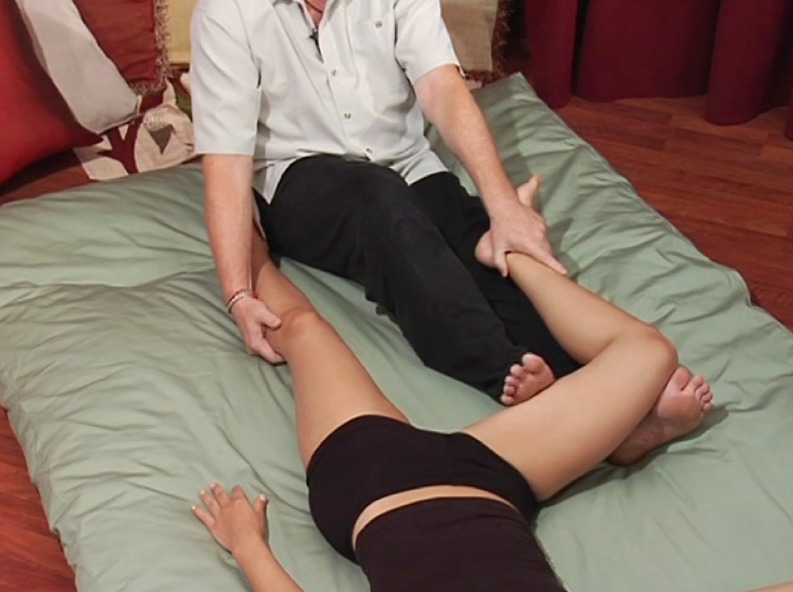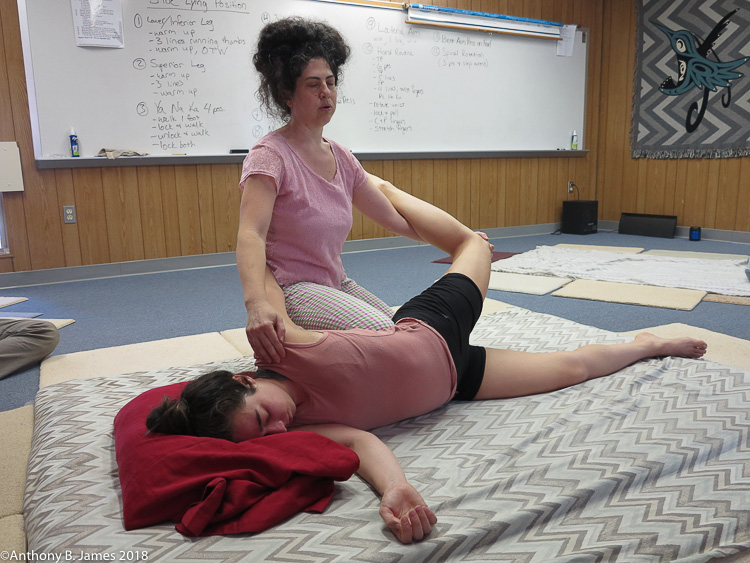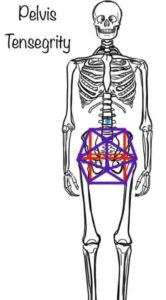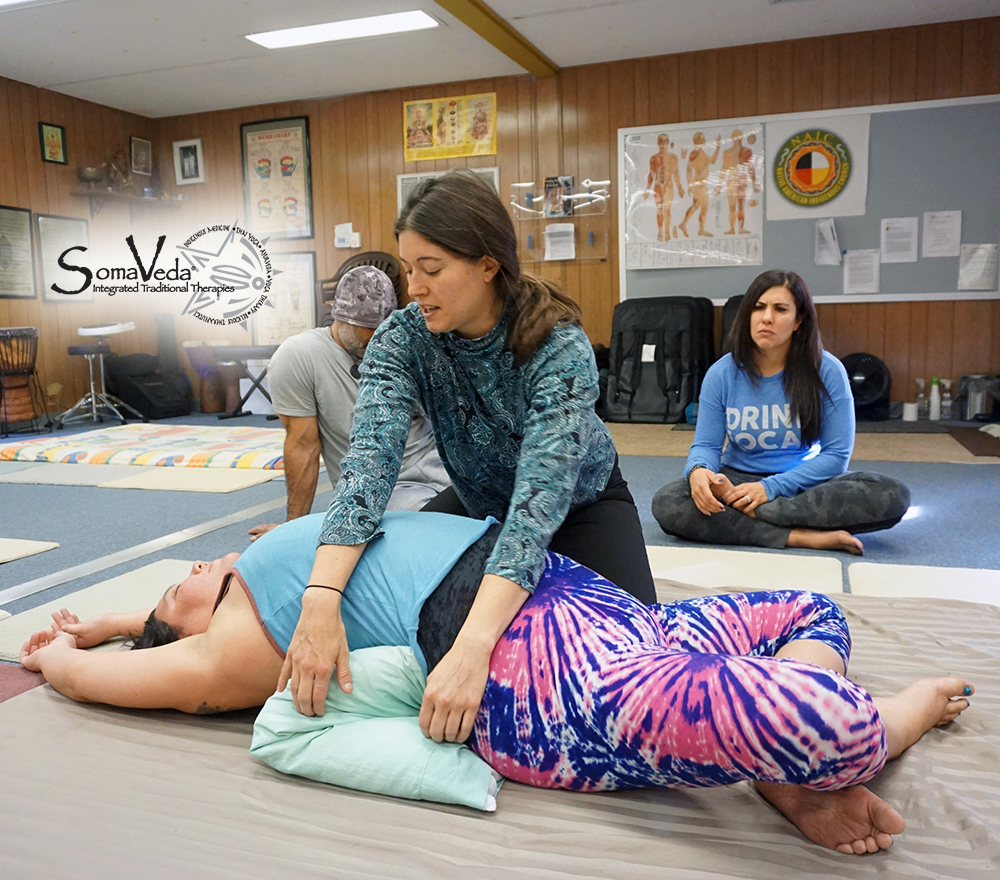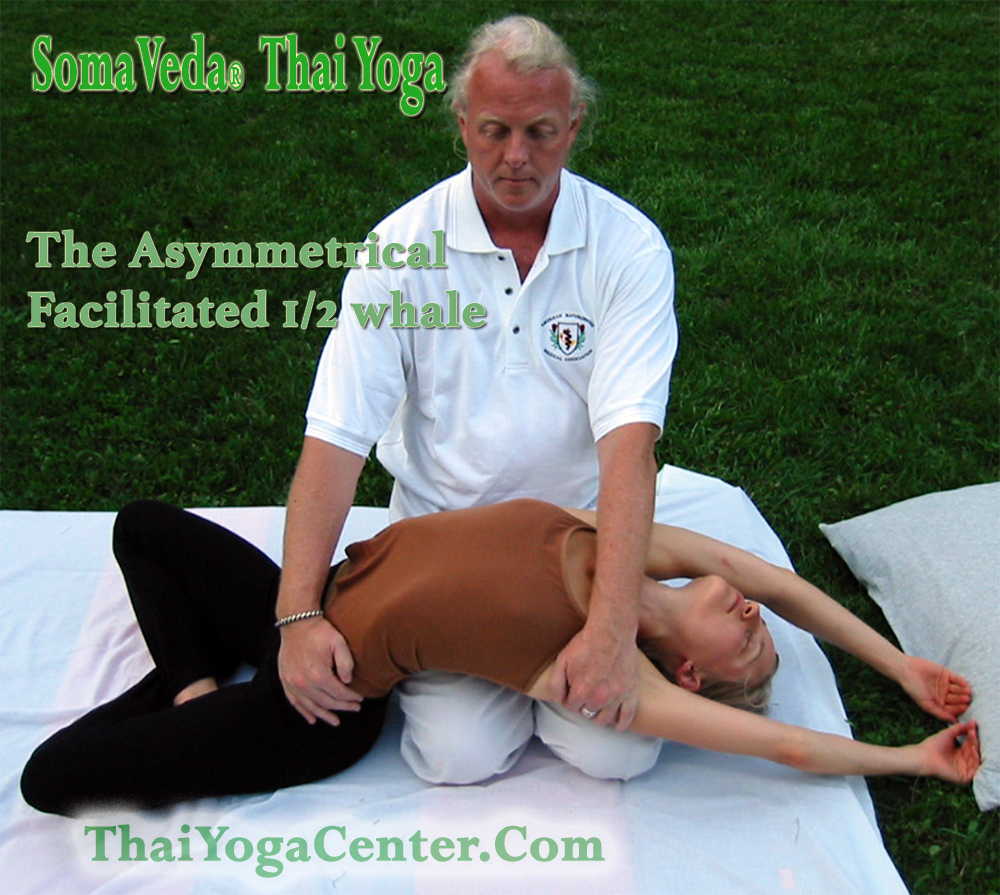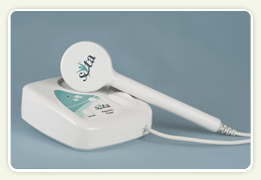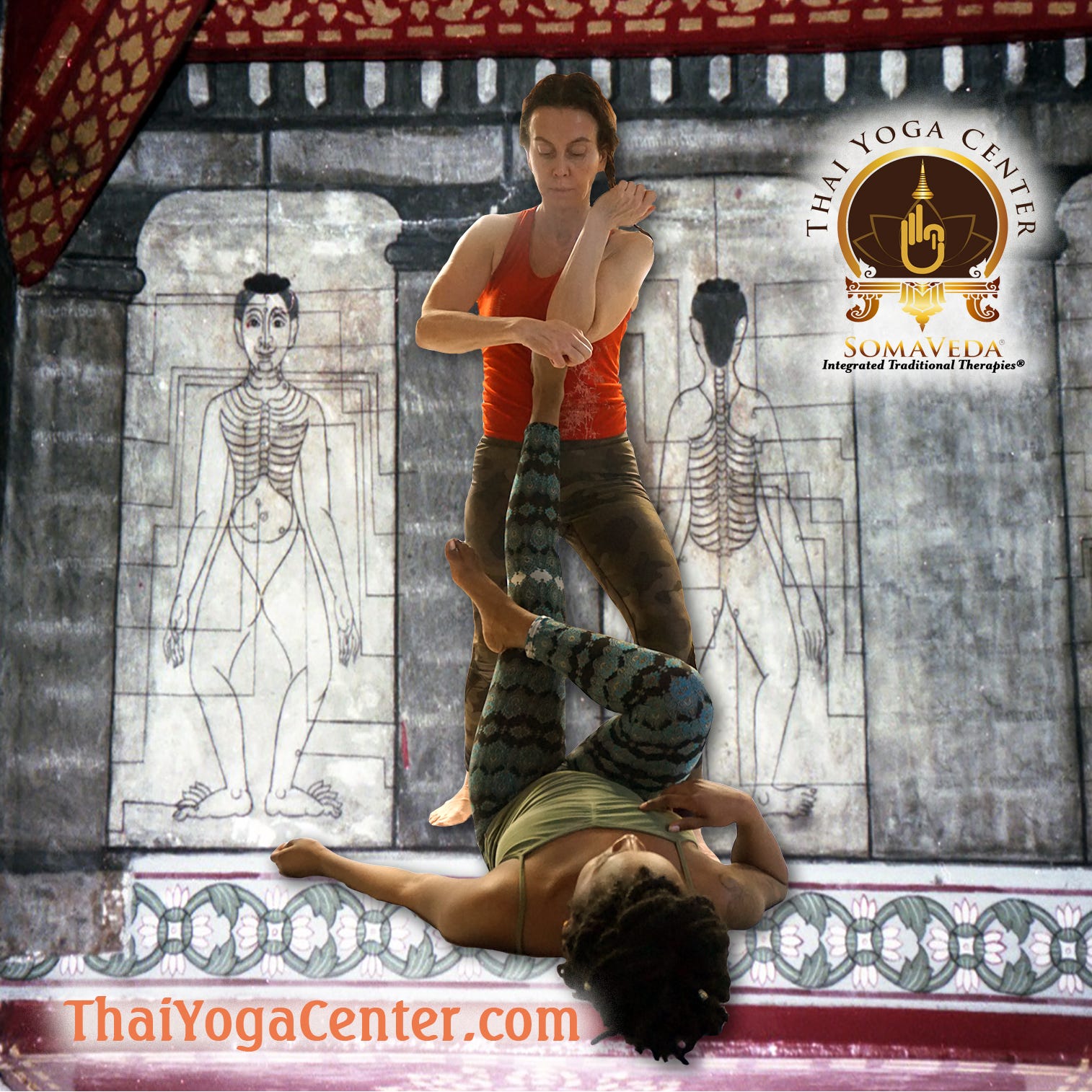
by
Anthony B. James is the director of the N.A.I.C. Education, Clinical Services, Missionary Clinic, and wellness center. Dr. James is also the founder of the Thai Yoga Center & SomaVeda College of Natural Medicine (S.C.N.M.), a Florida State Department of Education-authorized degree-granting institution.
5 Benefits of Thai Massage for Physical Therapy
Introduction
Thai Massage is a traditional remedial massage system with roots in Thailand. It’s a holistic approach to Massage that focuses on the body’s natural energy lines, Prana Nadi or Thai Sen Lines, to promote health, healing, recovery, and relaxation. Thai Massage involves gentle stretches, acupressure, and rocking to help relax the body and mind.
Recently, Thai Massage has gained popularity as a form of physical remedy, with people seeking its numerous benefits for the body and mind. Its holistic approach to healing and relaxation makes it a unique and effective remedial therapy for many physical and internal health conditions. Whether you’re looking to relieve muscle injury, or spasms, reduce or correct inflexibility, or relax and decompress, Thai Massage may help.
So why is Thai Massage getting increasingly popular as a form of remedial physical and or occupational therapy? One reason may be its ability to address various physical and internal health issues, conditions, and syndromes. Whether dealing with chronic and habitual pain and stress or simply looking to improve your overall health, Thai Massage has the structured protocols and techniques to offer significant benefits. In the following sections, we will further explore some of the main advantages of Thai Massage for physical therapy.
- Improved flexibility and range of motion:
One of the main benefits of Thai Massage is its capability to reduce or improve inflexibility and range of motion. Thai Massage achieves this result through gentle Yoga Therapy postures, “stretches” that help to loosen and stretch tight muscles. Improved flexibility can have a range of benefits for overall physical health and healthy- being, including:
Reduced risk of injury: Stretching helps to increase the range of stir in your joints, which can help to reduce the risk factors of injury during everyday life and physical conditioning. It is crucial for people who engage in regular physical exertion, athletics, or sports, as increased flexibility can help to reduce muscle strains, sprains, and other injuries.
Improved posture: Tight muscles can contribute to poor posture, leading to back pain and other issues. By stretching and loosening these muscles, Thai Massage can help to improve structure and posture while reducing the threat of associated problems.
Enhanced athletic performance: Improved flexibility can also help to support superior performance. By increasing the accessible range of motion in your joints, you may be able to move more efficiently and effectively, leading to better results in your chosen sport or physical activity.
In addition to these benefits, increased flexibility can make you feel better overall. Stretching can help to release antagonistic tension and spasm, increasing blood inflow to your muscles and leaving you feeling more relaxed and re-energized. If you want to improve your flexibility and range of motion, Thai Massage is a great option.
2. Reduces muscle tension and chronic pain:
Another crucial benefit of Thai Massage is its ability to reduce muscle tension, spasms, and chronic pain. Physical Therapy benefits of Thai Massage originate through varietal and functional traditional Thai massage techniques that help to loosen tight muscles and promote relaxation.
One possible explanation for the pain-relieving results of Thai Massage is the increased blood flow it can promote. Thai Massage can help to increase blood flow to the muscles, bringing fresh oxygen and nutrients to the area and helping to flush out waste products such as lactic acid. This increased blood flow can help to reduce muscle spasms and promote mending and healing. This high blood flow can also help to mitigate site-specific and overall inflammation.
Thai Massage may also effectively reduce pain due to the release of endorphins, natural painkillers produced by the body. These endorphins can help reduce pain perception, furnishing significant- required relief for those suffering from chronic pain conditions. Overall, Thai Massage can effectively reduce muscle spasms (sympatheticotonia, antagonistic muscle tension) and chronic pain, helping to alleviate motion limitations and promote overall well-being. If you are dealing with muscle tension or chronic pain, try Thai Massage to see if it can relieve you.
3. Reduces muscle tension and chronic pain: Thai massage protocols and techniques can reduce muscle spasms and chronic pain. Applying these interesting Traditional Thai Medicine techniques (Thai Marma Chikitsa) can help relieve muscle spasms by improving blood flow and releasing endorphins, which are natural anodynes or natural painkillers produced by the body. Traditional Thai Massage, also known as “Thai Yoga Therapy,” can give significant- immediate, and long-lasting relief to those suffering from chronic-habitual pain. One possible explanation for the pain-relieving effects of Thai Massage is the increased blood flow it promotes. Massage can help to increase blood flow to the muscles, bringing fresh oxygen and nutrients to the area and helping to flush out waste products. This increased blood flow can help to reduce muscle tension and promote healing.
The release of endorphins is another possible mechanism behind the pain-relieving effects of Thai Massage. Endorphins are natural anodynes produced by the body, and their presence can help reduce pain perception. This fantastic healing therapy can relieve those dealing with chronic pain conditions. Overall, Thai Massage can effectively reduce muscle spasms and chronic pain, helping to ease inflexibility and range of stir and promote overall well-being. Once again, If you are dealing with muscle tension or chronic pain, try Thai Massage to see if it can relieve you.
4. Boosts immune system function:
Research has shown that Thai Massage can positively affect the immune system, helping boost its function. A robust immune system is essential for maintaining overall health and well-being.
There are many possible explanations for the immune-boosting effects of Thai Massage. One is the increased blood flow that the Massage can promote. As mentioned before, Massage can help to increase blood flow to the muscles, bringing fresh oxygen and nutrients to the area and helping to flush out waste products. This increased blood flow may also positively impact the immune system, helping to support its function. Traditional Thai Massage works or treats the entire client’s body. That means the increased blood flow benefit affects the whole body, a systemic gift with all the additional benefits you would expect from a purely local increase of blood flow to a particular part of the body, such as any extremity.
Another possible explanation for the immune-boosting effects of Thai Massage is the relaxation of the body’s stress response. Stress can hurt the immune system, so anything that helps to reduce stress may also help to boost immune function. Thai Massage can be particularly effective at promoting relaxation and reducing stress, making it an excellent choice for those looking to support their immune system. Overall, Thai Massage has the potential to boost immune system function, helping to support overall health and well-being.
5. Promotes relaxation and stress reduction:
In addition to its physical benefits, Thai Massage is known for its ability to promote relaxation and reduce stress. This stress reduction effect begins immediately and can continue or last for days after even one therapy session! The gentle stretches and acupressure (Marma Chikitsa) techniques used in the treatment protocols and individual sessions can help relax the mind and body, providing a sense of calm and well-being. Reducing stress can have a range of benefits for overall physical and internal health. Stress can hurt the body, causing problems similar to fatigue, headaches, and muscle spasms. By reducing stress, Thai Massage can help to palliate these symptoms and promote overall health and well-being. In addition to the immediate relaxation and stress-reducing direct effects of Thai Massage, the protocol may also have longer-term benefits. By helping to reduce stress, Thai Massage can improve sleep quality, boost mood, and lower the threat and risk of specific health problems. Thai Massage directly affects positive posture and structural alignment. Misalignments in the body’s structure can cause or contribute to stress. In severe cases, structural misalignments and deviations can directly affect the circulation of any bodily circulations, including innervation, blood flow to organs or extremities, lymphatic drainage, etc. Overall, Thai Massage can be an effective way to promote relaxation and reduce stress, providing and facilitating both immediate and more extended-term benefits for overall physical and internal health.
Conclusion:
Thai Massage offers a range of physical remedy benefits, including reductions of inflexibility and inhibiting free accessible range of motion. It reduces muscle spasms and chronic pain, boosts immune system function, and stimulates relaxation and stress reduction. These benefits make Thai Massage popular for those seeking a holistic approach to physical therapy and improving overall well-being.
Consider seeking a trained and certified Thai Massage/ Thai Yoga therapist in your area. Thai Massage is considered one of the most effective traditional medicine-based alternatives to conventional western/ allopathic physical therapy. It is also a great addition and adjunct to any physical therapy treatment program. Many P.T.s, Physical Therapy Doctors, Occupational therapists, and orthopedic professionals, including nurses and allied medical professionals, are currently studying to gain knowledge and applications of Thai massage techniques and protocols. When practiced by a trained and expert therapist/ practitioner, Thai Massage is safe and the poster child for functional medicine for various illnesses, conditions, and syndromes from mild to severe and chronic to acute. Again, finding a qualified therapist or practitioner who can tailor the Thai Massage to your individual needs and preferences is essential. With the right therapist, you can experience firsthand Thai Massage’s many physical therapy benefits.
Where to learn Thai Massage or locate a Thai Massage Certification Program? ThaiYogaCenter.com
Interested in a college degree program based on Thai Massage, Thai Yoga, Ayurveda, or Natural Medicine? SomaVeda.org
How to find a Thai Massage Practitioner? Thai Massage Practitioner Directory
Want to see Thai Massage Videos? SomaVeda1 YouTube Channel
For Thai Massage Books and related, visit BeardedMedia.Com
©2023 Anthony B. James, All Rights Reserved

